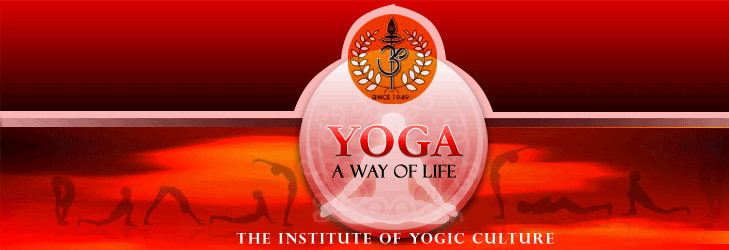

“Yoga – A Way of Life”
sums up the Institute’s Philosophy. The word ‘Yoga’
is seen as an umbrella term so as to incorporate a holistic multi dimensional
approach thereby appealing to all aspects of humanity. The foundations
of this broad based approach are grounded in the ways of practicing
Hatha and Raja Yoga. A variety of physical exercises, breathing techniques,
conscious relaxation and meditation practices are backed up by diet,
massage and universal philosophy.
The institute was established in 1949 for undertaking training in yoga, pathological research and development in yoga therapy, propagation of yogic culture and dissemination of knowledge in the rare disciplines of Siddha Therapy, physical massage and marma vidya. Dr. B.Padmanabha Pillai M.A, the founder president of the institute has been practising in these fields for more than 5 decades and he was an acknowledged international authority on the subject. With his knowledge of Sanskrit he has studied the original texts and the life time of research and practice has given him a rare insight into the true meanings there in. A constant stream of foreign nationals especially from the United Kingdom, Germany, France, America, Canada, Australia and Italy, among others, comes for regular training and discussions in these fields and to seek advice from Dr.Pillai. Psychic training and research is an equally important activity of the institute, though, restricted and therefore often latent.
Government in the Health and Labour Department recognized the yoga system of treatment on 27.06.1960 after consultations with the Dir. Health Services, Director of indigenous medicines and the Medical Council. By the time the Institute began with 10 members had grown into a sizeable organization of 3000 members, with a library of documented evidence attested by patients cured of chronic ailments such as Asthma, Diabetes, Bronchitis, Blood Pressure, Dysentery, Gastric Trouble, Migraine, Rheumatism, Spontilitis and others. There are also a wealth of information and testimonials from individuals who has successfully undergone training and treatment in the Institute.
Consequently, in 1961, a Committee appointed by the Ministry of Education, Government of India, headed by Dr.S.S.Mishra, visited the Institute to collect the scientific evidence to examine the methods and to evaluate the therapeutic claims of Yoga. After a close scrutiny of evidence collected from 71 yogic institutions all over the country 10 were selected for establishing research laboratories. One of these was the Institute of Yogic Culture, Thiruvananthapuram, for which the committee recommended. Financial support is to be provided to the centre for developing a scientific assessment centre. A small set up consisting of a pathological laboratory, and the services of the doctors and technicians are recommended. However, the financial supporting for setting this up was not forthcoming.
Meanwhile the Institute has made steady progress in the propagation of yogic culture and yoga therapy. The State Government established a Department of Yoga, appointing Dr.Pillai as Director. The Department conducted village extension programmes in 1962 and 1963 and trained yoga instructors to work in Panchayats and in selected schools. Since then the policy of training yoga instructors / instructresses and teaching yoga has continued, with a steady stream of foreign students coming to the institute for instruction and an increasing number of people for yoga therapy. This fact and the changing nature of modern medical practice in the advanced western countries are leading to a need for a formal training in yoga therapy. It is therefore fundamentally important that a recognized college with a formal syllabus and examination leading to a diploma or degree be set up immediately.
The Institute of Yogic culture was recognized by the Government as one of the leading organizations in the field and thus was and still is the recipient of a small grant. The original aims are still central to Dr.Pillai’s work and the list of people who leave the institute cured of the diseases continues to grow. By simple word of mouth, information about these seemingly miraculous methods reaches all parts of the world and it is in this same selflessly and unambitiously that the institute will continue to function.